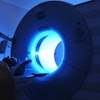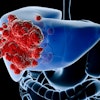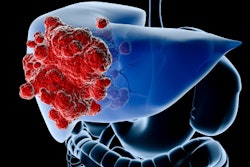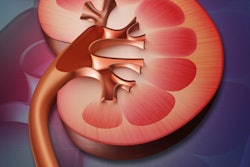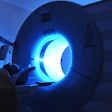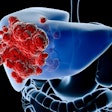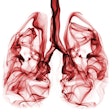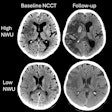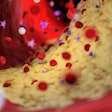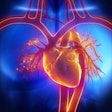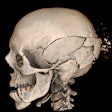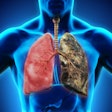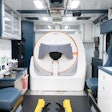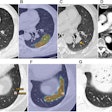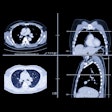Salvage image-guided thermal ablation can treat locally recurrent non-small cell lung cancer (NSCLC) after stereotactic body radiation therapy (SBRT), a study published November 5 in the American Journal of Roentgenology found.
Researchers led by medical student Michelle Mai from Brown University Health in Providence, RI, found that thermal ablation with CT guidance achieved technical success in all procedures and led to no major complications.
“Salvage image-guided thermal ablation provides an alternative treatment approach in high-risk patients lacking other treatment options,” Mai and colleagues wrote.
While SBRT provides noninvasive treatment for NSCLC, recurrence is common, and repeated radiation exposure has a higher risk of causing injury to the lungs.
Ablation techniques in recent years have gained traction for treating small tumors, with proponents highlighting their minimally invasive nature, shorter recovery times, and safety profile for patients. The researchers suggested that image-guided thermal ablation, which uses heat to treat tumors, could serve as a salvage treatment option for recurrent NSCLC.
Mai and co-authors described their experience in using this approach as salvage treatment for patients with locally recurrent NSCLC after SBRT.
The study included 40 patients, with five interventional radiologists performing percutaneous CT-guided thermal ablation procedures. At the time of ablation, 24, three, eight, and two patients had stage I, II, III, and IV disease, respectively, with disease stage being unknown in the remaining three patients.
 Images depict post-SBRT image-guided thermal ablation. (A) Axial CT image demonstrates a nodular recurrence of NSCLC at the site of prior SBRT in the left lower lobe (arrow). (B) Intraprocedural axial CT image shows placement of a microwave ablation probe within the recurrent tumor, with surrounding ground-glass opacity (arrow). (C) PET-CT obtained 14 months post-ablation demonstrates no significant FDG uptake within the treated lesion (arrow); however, a new site of disease is noted (between arrowheads).ARRS
Images depict post-SBRT image-guided thermal ablation. (A) Axial CT image demonstrates a nodular recurrence of NSCLC at the site of prior SBRT in the left lower lobe (arrow). (B) Intraprocedural axial CT image shows placement of a microwave ablation probe within the recurrent tumor, with surrounding ground-glass opacity (arrow). (C) PET-CT obtained 14 months post-ablation demonstrates no significant FDG uptake within the treated lesion (arrow); however, a new site of disease is noted (between arrowheads).ARRS
The team reported that all procedures were technically successful, with no major complications or deaths occurring from ablation. Twelve patients experienced minor complications, including pneumothorax (n = 9), pleural effusion (n = 2), and self-limited hemoptysis (n = 1).
During follow-up, which had a median of 20.9 months, 16 patients experienced local tumor progression and 17 experienced remote disease progression. And 22 patients experienced local and/or remote disease recurrence.
Finally, 20 patients died during the study period. While the median local progression-free survival was 13.7 months, the median overall progression-free survival was 15.7 months. The team reported a median overall survival of 51 months.
With these results in mind, the study authors suggested that thermal ablation “should be incorporated into multidisciplinary treatment discussions for recurrent NSCLC management.”
Read the entire study here.

